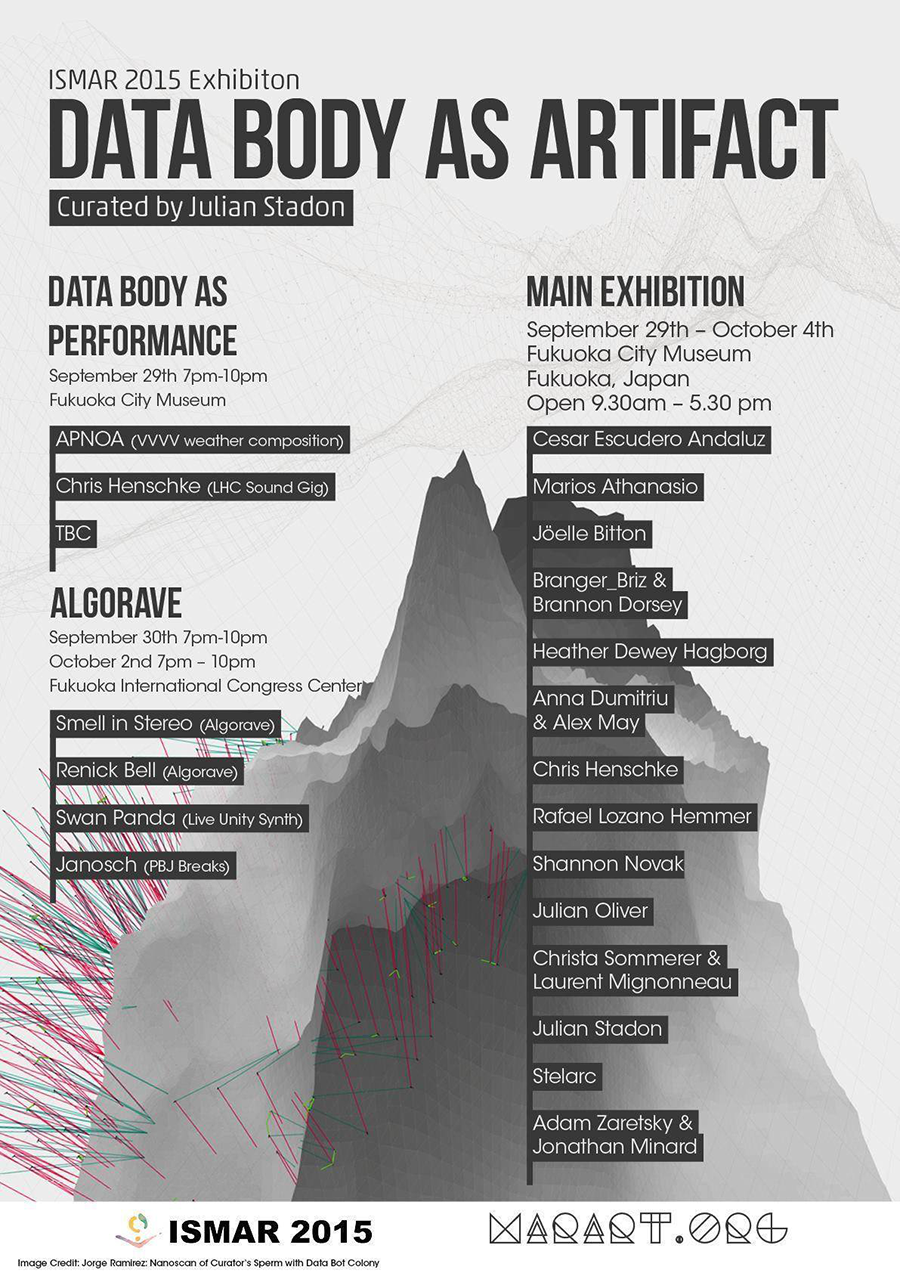This exhibition curated by Julian Stadon and Jorge Ramirez, presents a range of artists that explore disruptive or alternative strategies for representing the relationship between body as material organism, embodied data/interaction and body as artifact (data body). The exhibition explores what reality is in relation to we humans as organisms and how digital technologies, particularly networked interactive systems have shifted our understandings of what it means to be human in an age of post-biological, post-digital existence.
The artworks range from traditional augmented reality marker based sound compositions, to bio-art interventions, identity obfuscations, network jammers and data miners, to autonomous robotic identity thieves, to augmentations of the body, such as bodily augmentation, dream documentation, cellular and nano-scale interventions or examinations of how we negotiate these new spaces, quantum time and identity.
The exhibition this year will be held at the Fukuoka City Museum, a place famous for historical Japanese artifacts. In response to this history, this exhibition questions what artifacts we leave behind from embodied mixed reality interaction. Recent developments in hardware and software input/output systems along with the evolution of digital fabrication methods have revolutionised the ways in which artists work with technology, particularly in relation to the body. Such approaches have shifted the ways in which we perceive ourselves, in relation to our online identities (data bodies) and their positioning within the various socio/political/ economic networks that they traverse. As our online presence consolidates, what happens to our material presence? What traces, shadows, echoes and footprints from digital presence become materialised and how do we develop an object-orientated ontology for such phenomena?
The Data Body as Artifact Exhibition seeks to investigate these questions, along with challenging popular notions of what mixed and augmented reality art is, how we frame such an openly diverse field and most importantly, what contribution can creative discourse offer towards a broader understanding of how we humans situate ourselves within these constantly evolving multiple realities and finally what effect/affect this has on our bodies.
